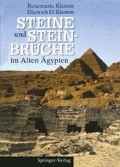Zusammenfassung
Beim Studium der geologischen Karte Ägyptens wird deutlich, daß der Nil auf etwa 65% seiner Wegstrecke durch das klassische pharaonische Ägypten von Aswan bis zu seiner Mündung beidseitig von eozänem Kalksteingebirge flankiert wird. Das Flußtal selbst hat sich im Laufe der Zeit in das plateauartige Kalksteingebirge tief eingekerbt, so daß trotz der ständig wirksamen Erosion die zumeist flachliegenden Kalksteinabfolgen in Mächtigkeiten bis zu 50 m (selten mehr) häufig über viele Kilometer in nordsüdlicher Richtung als Gebirgs-abbrüche aufgeschlossen sind.
Access this chapter
Tax calculation will be finalised at checkout
Purchases are for personal use only
Author information
Authors and Affiliations
Rights and permissions
Copyright information
© 1993 Springer-Verlag Berlin Heidelberg
About this chapter
Cite this chapter
Klemm, R., Klemm, D.D. (1993). Kalksteine. In: Steine und Steinbrüche im Alten Ägypten. Springer, Berlin, Heidelberg. https://doi.org/10.1007/978-3-642-77027-2_3
Download citation
DOI: https://doi.org/10.1007/978-3-642-77027-2_3
Publisher Name: Springer, Berlin, Heidelberg
Print ISBN: 978-3-642-77028-9
Online ISBN: 978-3-642-77027-2
eBook Packages: Springer Book Archive

